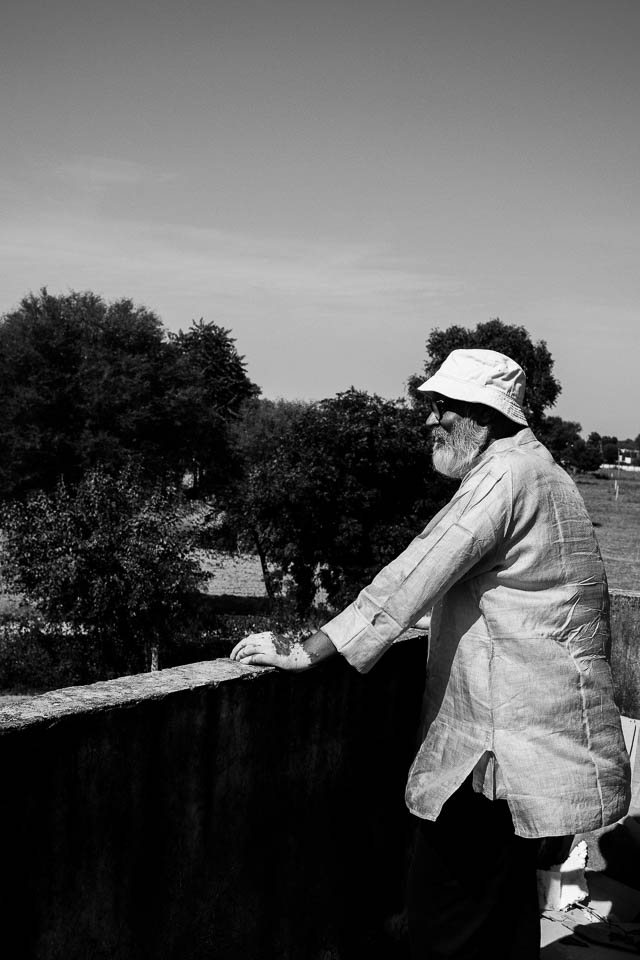Vipul Kumar is a mid-career sculptor whose work fuses spirituality, mythology, and Buddhism through abstract and semi-figurative forms. Known for his mastery over ceramic textures, his sculptures invite contemplation and personal interpretation.
1. Can you walk us through your process? How do you begin conceptualizing a new sculpture?
Vipul Kumar: Every sculpture starts with a seed of an idea, often inspired by themes of spirituality, mythology, or Buddhist philosophy. I immerse myself in these concepts through research, contemplation, and sketching. Once the concept begins to take shape, I explore how best to translate it into abstract or semi-figurative forms, allowing room for the piece to evolve organically during the making process.
2. Your work beautifully combines abstract and semi-figurative elements. How do you decide on this balance?
VK: It’s intuitive. The balance between abstraction and figuration allows me to create a dialogue between what is seen and what is felt. Mythological characters or spiritual elements in my work are not rendered explicitly—they’re hinted at, inviting viewers to engage their imagination. This ambiguity brings the forms alive, encouraging individual interpretation.
3. How does your engagement with Buddhism influence your artistic practice?
VK: Buddhism teaches mindfulness and the beauty of impermanence, which I try to convey through my sculptures. The sense of tranquility and introspection that Buddhism emphasizes resonates deeply with me. My sculptures aim to encapsulate moments of stillness or transcendence, inviting viewers to pause and reflect on their own spiritual journeys.
4. Can you talk about your choice of materials? Why do you often work with ceramics?
VK: Ceramics offer both fragility and strength, which aligns perfectly with the themes I explore. Clay is malleable, allowing me to texture the surface in intricate ways that enhance the sensory experience. At the same time, once fired, the material gains a permanence that reflects the timeless nature of the narratives I engage with.

5. The tactile quality of your sculptures is striking. How important is texture in your work?
VK: Texture is essential—it adds depth and complexity. It’s not just about how the piece looks but how it feels. The act of texturing allows me to connect with the material on an intimate level. It’s also a way of encouraging viewers to engage with the sculpture sensorially, experiencing it beyond just visual perception.
6. Your sculptures often depict mythological characters indirectly. How do you research and reinterpret these stories?
VK: I spend a lot of time understanding the essence of mythological narratives. It’s not about recreating the exact stories but about capturing the emotions and timeless truths embedded within them. This subtle approach makes the themes more universal, allowing audiences to connect with them in their own way, across cultures and personal experiences.
7. Light and shadow play significant roles in your compositions. How do you incorporate them into your design process?
VK: Light and shadow add dimensionality to the forms. While working on the composition, I consider how the sculpture will interact with its environment—how light will fall on the surfaces and create varying intensities of shadow. It brings the piece to life, offering different perspectives as the viewer moves around it.
8. As a mid-career artist, how do you keep pushing the boundaries of your practice?
VK: Experimentation is key. I don’t restrict myself to a particular theme or material—I constantly explore new ideas and techniques. Challenges and failures are part of the process, and I embrace them as learning opportunities. Staying curious keeps my practice evolving and helps me discover new facets of both the material and myself as an artist.
